Solution For If f\left( x \right) = {x^2} \cfrac{1}{{{x^2}}}, then find the value of f(5) Become a Tutor Blog Cbse Question Bank Pdfs Micro Class Download App Class 11 Math Calculus Relations and Functions II 502 150 If f (x) = x 2 x 2 1 , then find the value of f (5) See below If f(x)=1/x then f^1(x)=1/x f@f^1=f(f^1(x))=1/(1/x)=x f^1@f=f^1(f(x))=1/(1/x)=x f@f^1=f^1@f=xSolution For Let f(x)=3x1 and g(x)=x^22 then find fog Solve the following system of equations \displaystyle\, \frac{x}{y^2} \frac{y}{x^2} = \frac{9}{8}, \log_2

If F X A X N 1 N Where A 0 And N Is A Positive Integer Then F O F X Is
F(x)=x-1/x 1 then find f f(x)
F(x)=x-1/x 1 then find f f(x)-If f (x) = x1/x1 then find the value of f (2x) Find the answer to this question along with unlimited Maths questions and prepare better for JEE examinationMathematics Stack Exchange is a question and answer site for people studying math at any level and professionals in related fields It only takes a minute to sign up



Www3 Nd Edu Apilking Math Work Old exams Exam1f08soluutions Pdf
To ask Unlimited Maths doubts download Doubtnut from https//googl/9WZjCW `if f(x)f(1/x)=f(x)f(1/x) and f(3)=28` Then find f(4) 1/(1x) = sum_(k=0)^oo x^k Given f(x) = 1/(1x) It seems to me that the easiest way to find the Maclaurin Series is basically to start to write down the multiplier for (1x) that results in a value of 1 Write down 1 = (1x)( The first term of the multiplier will be 1, in order to get 1 when multiplied, so add that to the right hand side 1 = (1x)(1 When x is multiplied by 1 it Ex 12, 1 Show that the function f R* → R* defined by f(x) = 1/x is oneone and onto, where R* is the set of all nonzero real numbers Is the result true, if the domain R* is replaced by N with codomain being same as R*?
Divide f2, the coefficient of the x term, by 2 to get \frac{f}{2}1 Then add the square of \frac{f}{2}1 to both sides of the equation This step makes the left hand side of Misc 3 If f R → R is defined by f(x) = x2 − 3x 2, find f(f(x)) f(x) = x2 − 3x 2 f(f(x)) = f(x)2 − 3f(x) 2 = (x2 – 3x 2)2 – 3(x2 – 3x 2Let f be an injective map with domain {x, y, z} and range {1, 2, 3} such that exactly one of the given statement are correct and the remaining are false f ( x ) = 1 , f ( y ) = 1 , f ( z ) = 2
Graph f(x)=(x2)(x1)(x1) Find the point at Tap for more steps Replace the variable with in the expression Simplify the result Tap for more steps Simplify each term Tap for more steps Raising to any positive power yields Raising to any positive power yields Multiply by Multiply by Simplify by adding zeros Tap for more steps Add and Add and Add and The finalIt must be in terms of f (x)∵ ƒ(x) = ( x 1 ) / ( x 1 ) (1) ∴ ( x 1 ) ƒ(x) = x 1 ∴ x ƒ(x) ƒ(x) = x Thank you for registering One of our academic counsellors will contact you within 1 working daySolving for f R* → R* f(x) = 1/x Checking oneone
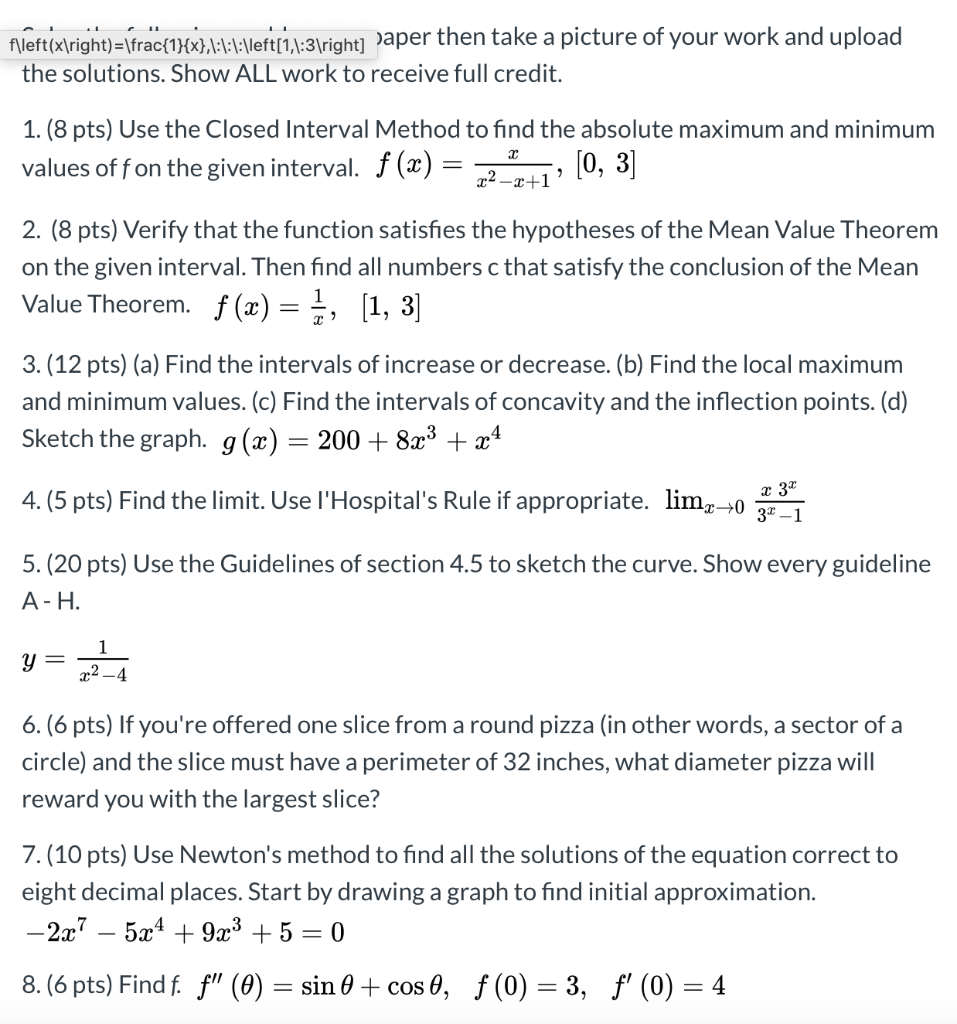



F Left X Right Frac 1 X 1 1 Left 1 1 3 Right Chegg Com
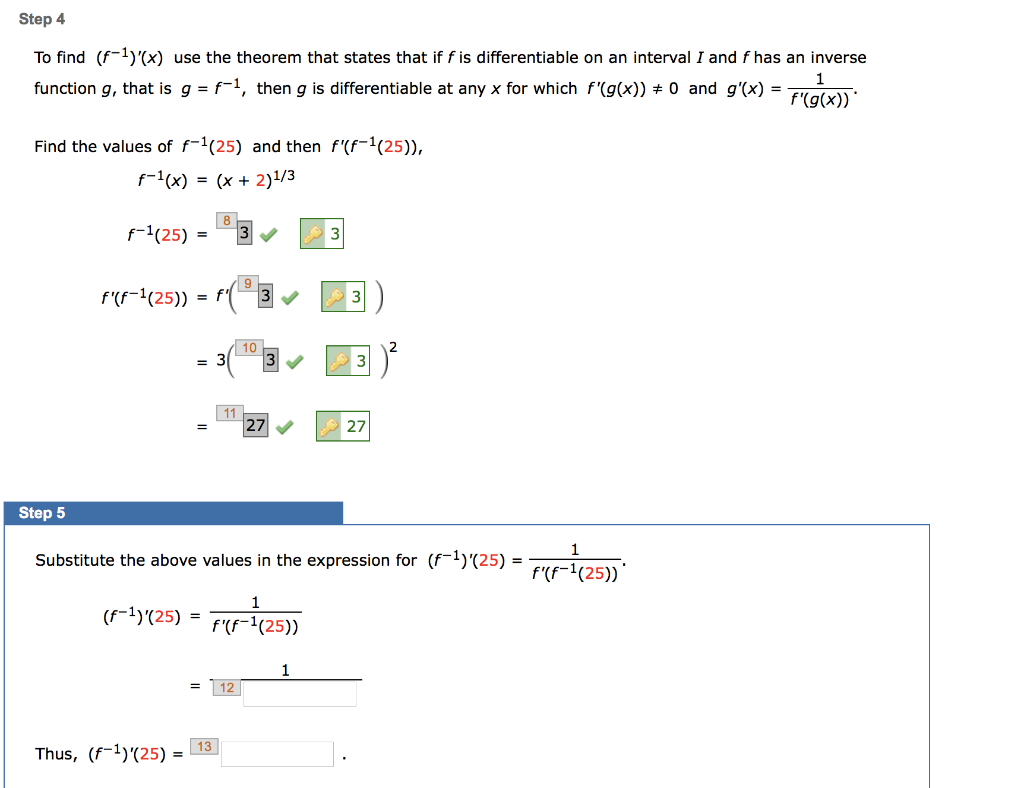



Step 4 To Find F 1 X Use The Theorem That States Chegg Com
#x^27 = 0# As a result, we find that the set of matrices of the form #pIqA# where #p# and #q# are rational is a field under matrix addition and multiplication This field is essentially the same as (ie isomorphic to ) the set of numbers ofFunction F (X 32bit) 64bit;Let f be a function such that f x → 2 x 2 3 Find the value of f ( 3) Medium View solution > A real valued function f ( x) satisfies the functional equation f ( x − y) = f ( x) f ( y) − f ( a − x) f ( a y) where a is a given constant and f ( 0) = 1, f ( 2 a − x) is equal to Hard




If F X X 1 X 1 X Is Not Equal To 1 Then Show That F F X 1 X Where X Is Not Equal To 0 Brainly In



If F X X 1 X 1 Then Show That I F 1 X F X Ii F 1 X 1 F X Sarthaks Econnect Largest Online Education Community
Steps for Solving Linear Equation F ^ { 1 } ( x ) = \frac { x 6 } { 7 } F 1 ( x) = 7 x 6 Multiply both sides of the equation by 7 Multiply both sides of the equation by 7 7F^ {1}x=x6 7 F 1 x = x 6 Calculate F to the power of 1 and get F Calculate F to the power of 1 and get FTo ask Unlimited Maths doubts download Doubtnut from https//googl/9WZjCW If `f(x)=(x1)/(x1)` then `f(2x)` is equal to 1) change notation #f(x) = # to y = So, y = 2x 7 2) Exchange the x & y variables Note this is what accomplishes that reflection across the line y = x So, x = 2y 7 3) Since x is the dependent variable and y is the independent variable and it is always a zillion times easier to solve a problem in y = form, solve the equation for y




If The Function F R R Defined By F X 4 X4 X 2 Then Show That F 1 X 1 F X And Hence Deduce The Value Of F 14 2f 12 F 34




If F X F 1 X F X F 1 X And F 3 28 Then Find F 4 Youtube
To find an antiderivative of your function note an antiderivative of x^n is 1/n1 x^n1 as can be checked by differentiating it Now you need to know something that is fairly intuitive but actually requires some advanced math to prove (you will learn the proof when you study analysis) that all antiderivatives have the form F (x) C where CIf f (x) = x1/x1 then f (2x) is ?Given a function g with this property, we can easily construct a suitable f Just let f ( x) = { g ( x) x ≥ 0 g ( − x) x < 0 If g is additionally continuous then so is f We can find a lot of continuous g Pick a 1 ∈ ( 0, 1), let a 0 = 0 and recursively a n = a n − 2 2 1 for n ≥ 2
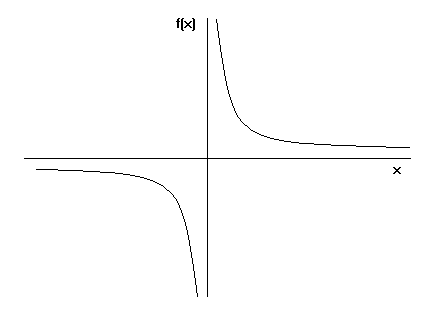



Functions Algebra Mathematics A Level Revision




If F X A X N 1 N Where A 0 And N Is A Positive Integer Then F O F X Is
Begin If (64BitInt (X) And Flag) > 0 then Result = g (32bit (X)) Else Result = 32BitInt (XLet F (X) =`{ (1 X, 0≤ X ≤ 2) , (3 x , 2 < X ≤ 3)}` Find FofClick here👆to get an answer to your question ️ If f(x) = 1 x x^2 x^100 then find f'(1)




If F X Tex Frac X 1 X 1 Tex X 1 Then Verify Fof X X Brainly In




If F X X 1 X 1 Then The Value Of F F F X Is
Transcript Misc 2 If f(x) = x2, find (𝑓(11) − 𝑓(1))/((11 − 1 ) ) Let us first find f(11) and f(1) For f(11) f(11) = (11)2 = 11 × 11Determining f 1 (x) of functions You write the inverse of \(f(x)\) as \({f^{ 1}}(x)\) This reverses the process of \(f(x)\) and takes you back to your original values 1 Again, it's specified as a 32bit number Make the return have more bits, use them to carry your state information between calls Const Flag = $;



Www Math Uh Edu Jiwenhe Math1432 Lectures Lecture01 Handout Pdf




If F X Frac X 1 X 1 Then
Divide \frac{f1}{f}, the coefficient of the x term, by 2 to get \frac{1}{2}\frac{1}{2f} Then add the square of \frac{1}{2}\frac{1}{2f} to both sides of the equation Click here 👆 to get an answer to your question ️ If f(x) =x1/x1 then find f(f(x)) tanweer73 tanweer73 Math Secondary School answered If f(x) =x1/x1 then find f(f(x)) 1 See answer tanweer73 is waiting for your help Add your answer and earn pointsIn simple terms, that notation implies that f^1(x) is the Inverse Function to f(x) To make is a bit easier to wrtie, let's let g(x) be the inverse of f(x), in other words, g(x) = f^1(x) In terms of mappings, If D is the domain of f and R is the




If F X X 1 X 1 Then Find F F X Maths Relations And Functions Meritnation Com



If F R R Be Defined By F X 3 X 3 1 3 Then Find Fof X Sarthaks Econnect Largest Online Education Community
Transcript Ex 13, 13 If f R → R be given by f(x) = 〖"(3 – x3)" 〗^(1/3) , then fof(x) is (A) "x" ^(1/3) (B) x3 x (D) (3 – x3) f(x) = 〖"(3 – x3Given function f(x) =x/(x1) Then f(1/x) = (1/x)/(1/x) 1 f(1/x) = (1/x)/(1 x)/x f(1/x) = (x/x)/(1 x) f(1/x) = 1/(1 x) Hence, f(x) =x/(x1) then f(1/x) = 1 Use the product rule to take the first derivative, than again to take the second This yields f'(x)=4x^3e^xx^4e^x and f''(x)=x^4e^x8x^3e^x12x^2e^x By the product rule, for a function fg, the derivative is given by f'gfg' or fg'f'g The order does not matter because addition is commutative To find the first derivative of the function, f'(x), first take the derivative of x^4



If F Is Even On Interval 5 5 What Is F X For F X F X 1 X 2 Quora



Given That P D F Of A Random Variable X As Follows F X Kx 1 X For 0 X 1 F X 0 Otherwise Find K And C D F Sarthaks Econnect Largest Online Education Community
Inverse\f(x)=\ln (x5) inverse\f(x)=\frac{1}{x^2} inverse\y=\frac{x}{x^26x8} inverse\f(x)=\sqrt{x3} inverse\f(x)=\cos(2x5) inverse\f(x)=\sin(3x) functioninversecalculator en Related Symbolab blog posts Functions A function basically relates an input to an output, there's an input, a relationship and an output ForI think so it's your start to which you are asking this questionOk for understanding clearly for basic Given f(x) = 1/x , so replace x by f(x) because function can take any defined real values It will give f(f(x)) = 1/f(x) Now we know that f(x surely you aren't actually that munted you spasticated flopper?




If The Function F X X 2 1 X 1 When X 1 K When X 1




Find F F X If F X X 1 0lt Xlt 1 And 1 X 1ltxlt 2
Solution For If f(x 1) f(x 1) = 2f(x) and f(0) = 0, then f(n1), n \space \epsilon \space N, is Become a Tutor Blog Cbse Question Bank Pdfs Micro Class Download App Class 11 Math Calculus Relations and Functions II 501 150 If f (x 1) f (x − 1) = 2 f (x) and f (0) = 0, then f (n 1), nSolution For If f(x)\, =\, (1\, \, x^3)^\frac{1}{3}, then find fof(2) Become a Tutor Blog Cbse Question Bank Pdfs Micro Class Download App Class 11 Math Calculus Relations and Functions II 505 150 If f (x) = (1 − x 3) 3 1 , thenIf f(x) = 3x 4, find f(5) and f(x 1) f(5) = 3(5) 4 = 19 f(x 1) = 3(x 1) 4 = 3x 7 Domain and Range The domain of a function is the set of values which you are allowed to put into the function (so all of the values that x can take) The range of the function is the set of all values that the function can take, in other words all of the possible values of y when y = f(x) So if y
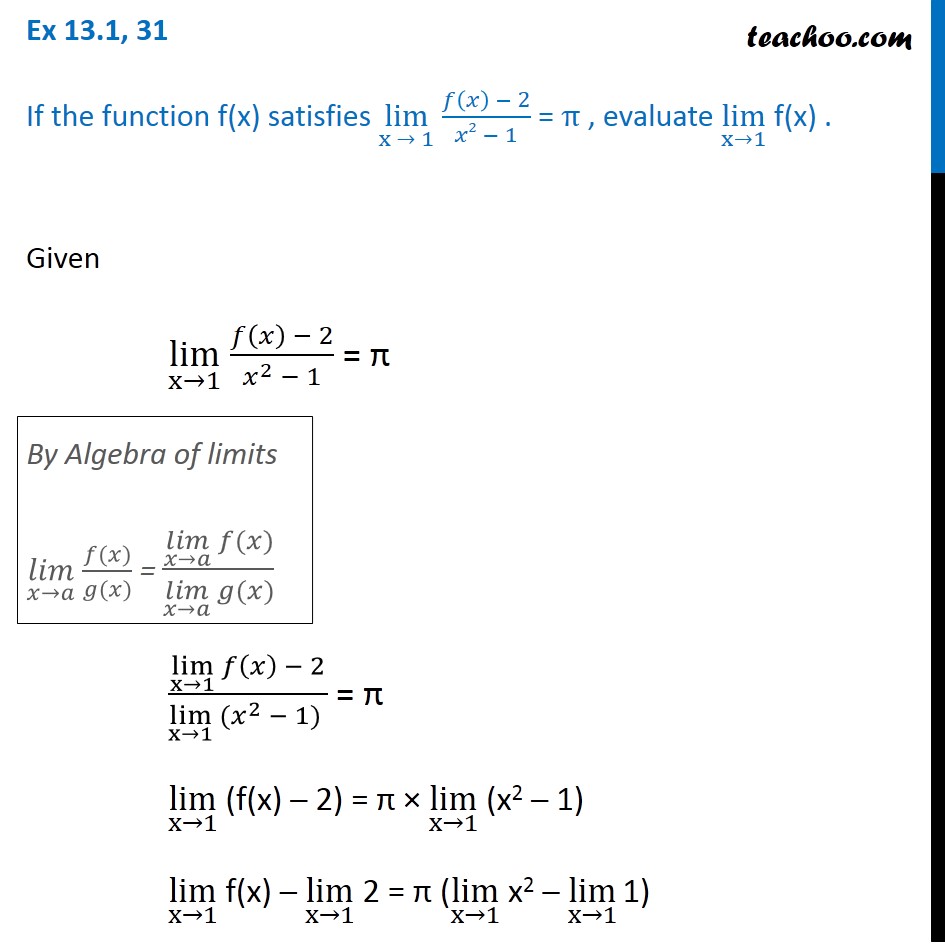



Ex 13 1 31 If Function F X Lim X 1 F X 2 X2 1 Pi
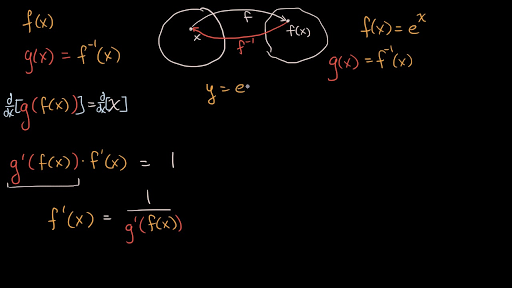



Derivatives Of Inverse Functions Video Khan Academy
If F(x) = (x1)/(x1), find (f of f)(x)Solution For If f(x)=cos(logx), then value of f(x) f(4)1/2{f(x/4)f(4x)} is (a) 1 (b) 1 (c) 0 (d) 1 Connecting you to a tutor in 60 seconds Get answers to your doubts Misc 4 Show that function f R → {x ∈ R −1 < x < 1} defined by f(x) = x/(1 𝑥 ) , x ∈ R is oneone and onto function f R → {x ∈ R −1 < x < 1



What Is The Value Of A If F X Ax X 1 Where F X X Quora




Ipe Material Notes
Calculus Find the Derivative f (x)=1/x f (x) = 1 x f ( x) = 1 x Rewrite 1 x 1 x as x−1 x 1 d dx x−1 d d x x 1 Differentiate using the Power Rule which states that d dx xn d d x x n is nxn−1 n x n 1 where n = −1 n = 1 −x−2 x 2 Rewrite the expression using the negative exponent rule b−n = 1 bn b n = 1 b nYour first equation f ( x) = y indicates that x must lie in the domain of f, and y in the range of f What your final equation tells you is that f ( f − 1 ( y)) = y for numbers y which are in the range of f If your range and your domain are the same, you can simply rename your variables to get f ( f − 1 ( x)) = xIf f(x)=(x4/2√x), then f'(1) is (A) (5/4) (B) (4/5) 1 (D) 0 Check Answer and Solution for above question from Mathematics in Limits and Deriva




2 8 And 2 9 Composite Functions And Inverse Chegg Com



Authors Library Caltech Edu 16 Calcunlimited Solutions Index Pdf
About Press Copyright Contact us Creators Advertise Developers Terms Privacy Policy & Safety How works Test new features Press Copyright Contact us CreatorsIf f (x) = s i n 2 x and the composite functions g{f(x)}=sin x, then the function g(x)= Hard View solution f (x) = tan x and g (x) = cot x 1 Medium View solution View more Learn with content Watch learning videos, swipe through stories, and browse through concepts Concepts > Videos > Stories > POPULAR CHAPTERS BY CLASS class 5 The Fish Tale Across the Wall Tenths and




If F X Sqrt X 2 1 G X X 1 X 2 1 And H X 2x 3 Then Find F Prime H Prime G Prime X




Inverse Functions And Logarithms Pdf Free Download
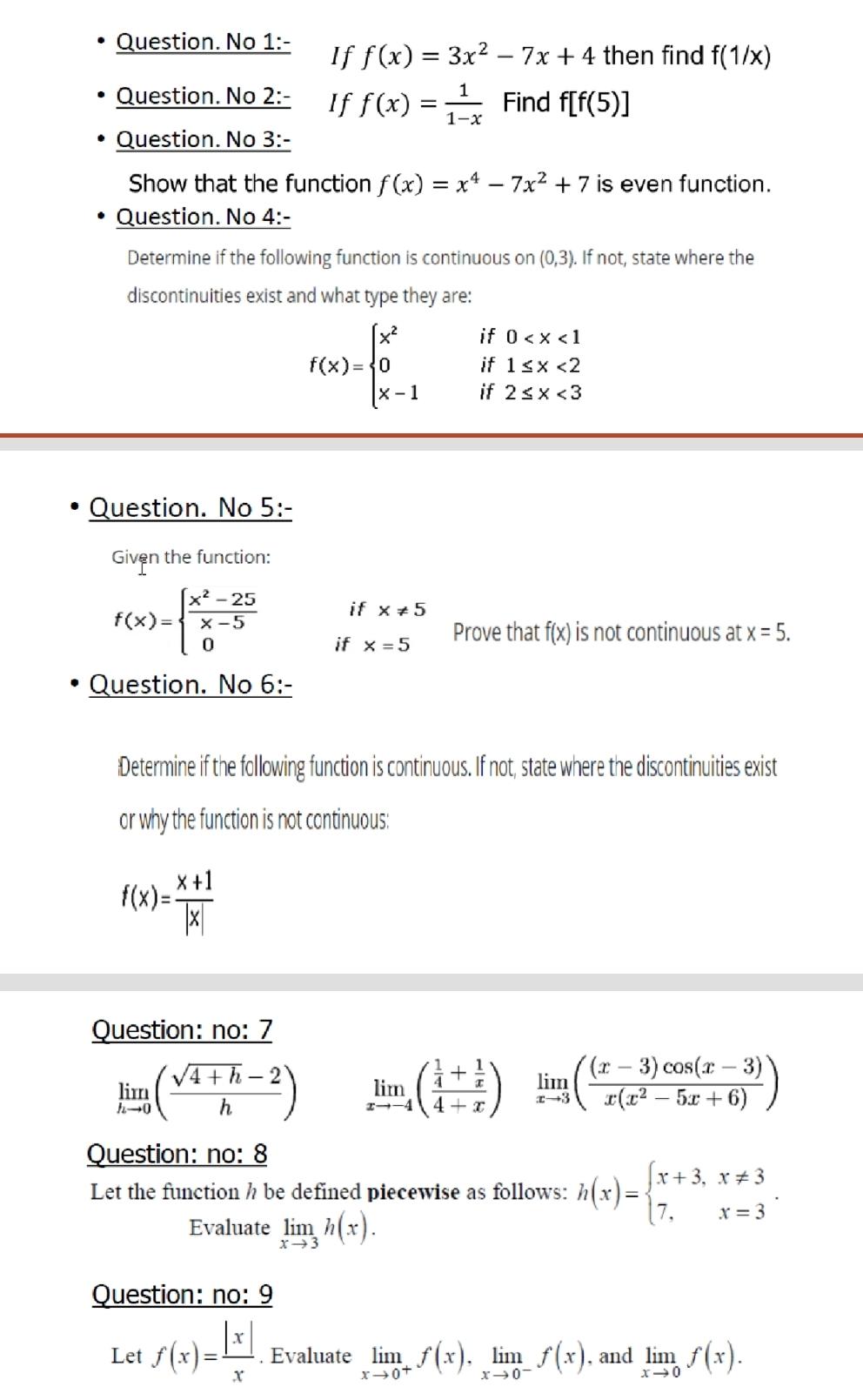



Question No 1 If F X 3x2 7x 4 Then Find Chegg Com




2 8 And 2 9 Composite Functions And Inverse Chegg Com
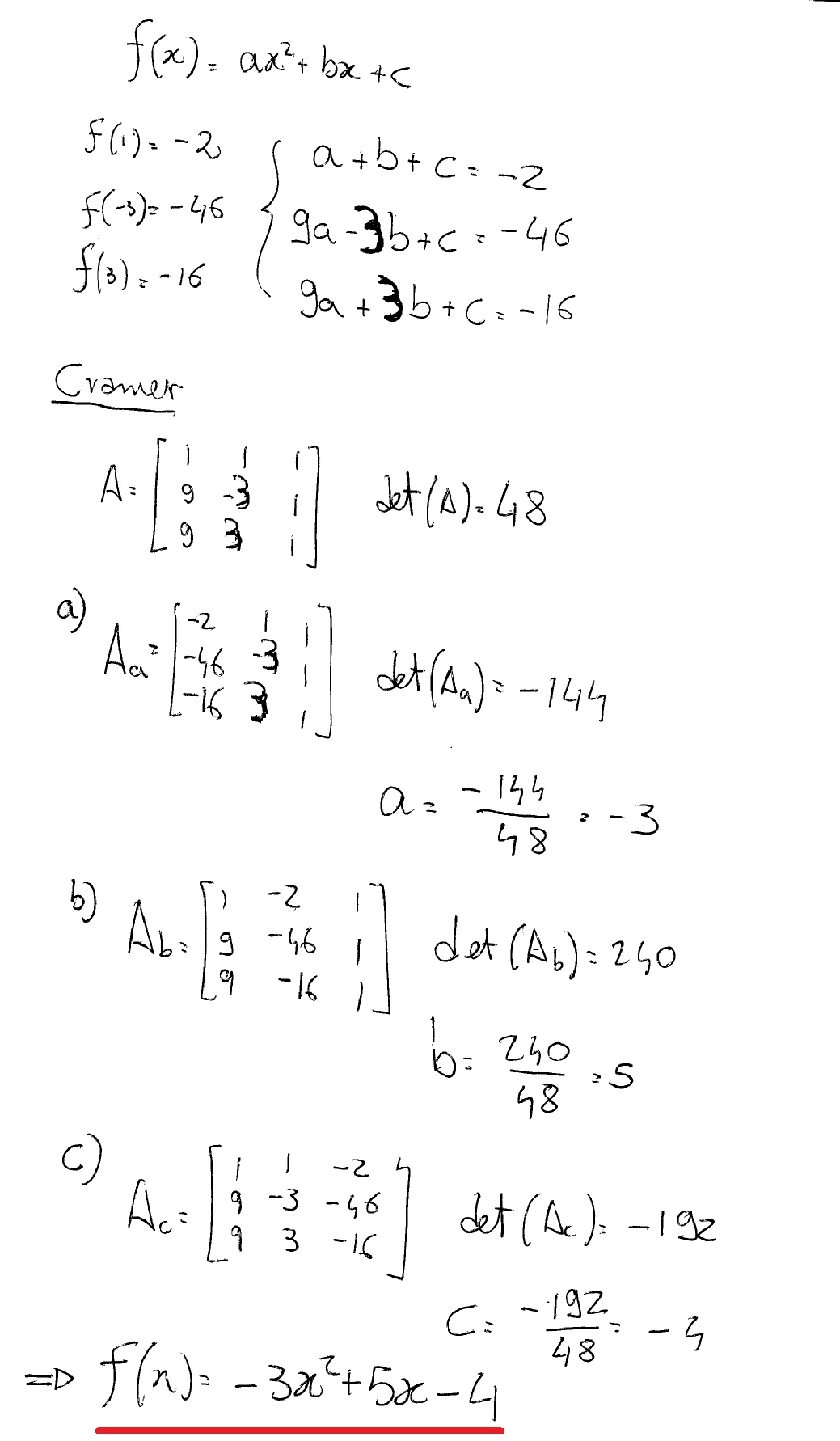



How Do You Find A Quadratic Function F X Ax 2 Bx C For Which F 1 2 F 3 46 And F 3 16 Socratic




If F X Log 1 X 1 X A N Dg X 3x X 3 1 3x 2 Then F G X Is Equal To F 3x Youtube




Ex 1 3 6 Show F X X X 2 Is One One Find Inverse Of F



Www3 Nd Edu Apilking Math Work Old exams Exam1f08soluutions Pdf




22 11 16 X L 23 Integer Answer Type Number Of So Math




Misc 4 Show F X X 1 X Is One One Onto Miscellaneous




Given The Function F X 1 X 2 Find The Points Of Discontinuity Of The Composite Funtion Y F F X Maths Continuity And Differentiability Meritnation Com




If F X 1 1 X Then The Derivative Of The Composite Function F F F X Is Equal To




In Exercises 47 54 Let G Denote The Inverse Of The Chegg Com




If F X X 1 X 1 Then Find F X F 1 X Brainly In
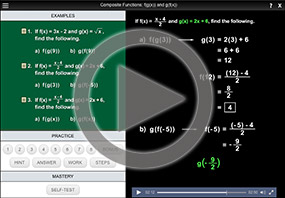



Composition Of Functions Composing Functions At Points




If F X X 3x 1 Find Xer Such That F 2x F X Brainly In




Find C If Lmvt Is Applicable For F X X X 1 X 2 Xepsilon 0 12



If F X X 1 X 1 Then F Ax In Term Of F X Is Given By Quora




Composite Functions
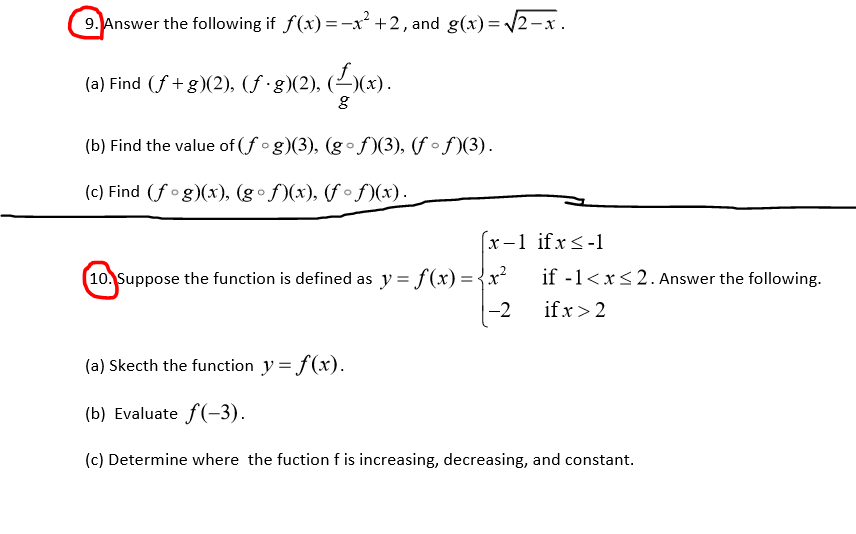



Answer The Following If F X X 2 2 And G X Chegg Com




Solution If F X 1 1 X 2 Then What Is F X




5 8 Verify That The Function Satisfies The Three Chegg Com




Let F X 1 X And G X 1 X If X 0 7 1 X If Chegg Com




Ex 1 2 1 Class 12 Maths Show F X 1 X Is One One Onto Where R



Www Topperlearning Com Answer Let F X Ax X 1 X Is Not Equal To 1 Then For What Value Of A Is F F X X Sehzhdzz
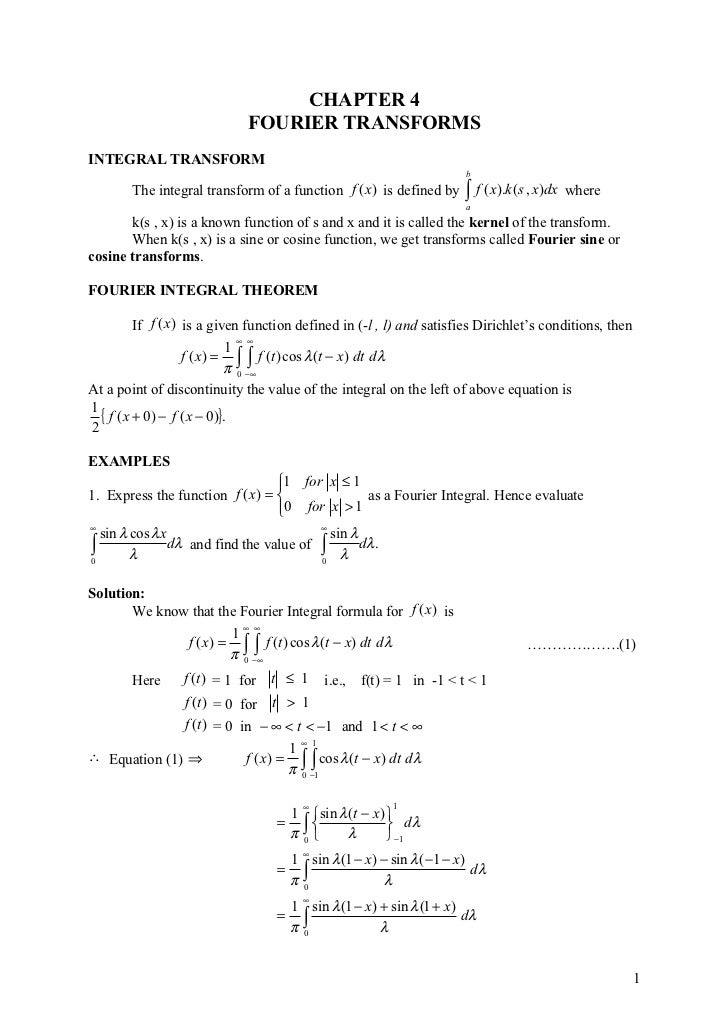



Chapter 4 Maths 3




If Math F F X 1 X Math Then What Is Math F X Math Quora
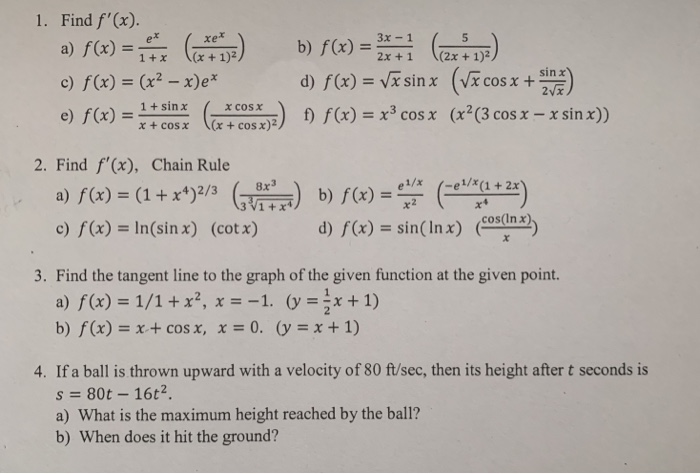



1 Find F X Xex E1 2 2x 1 B F X 2x 1 D Chegg Com




Misc 4 Show F X X 1 X Is One One Onto Miscellaneous




If F X Tex Frac X 1 X 1 Tex X 1 Then Find I Fofof X Ii Fofofof X Brainly In




If F Is A Function Such That F 0 2 F 1 3 F X 2 2f X F X 1 Then F 5 Is Youtube




If X Frac 1 X 1 X Then F F Cos 2 Theta Equal To
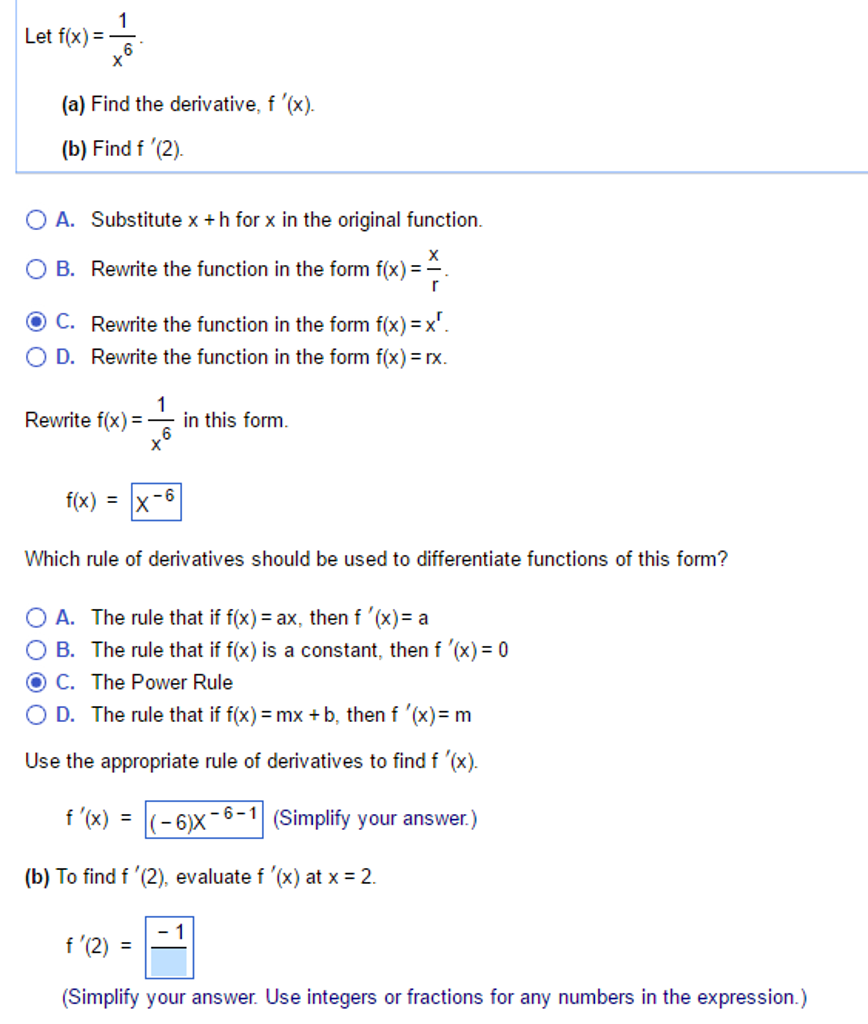



Let F X 1 X 6 Find The Derivative F X Find Chegg Com




If F X X 1 X Then Number Of Solution Of F F F X 1



If F X 2f 1 X 3x X 0 And S X R F X F X Then S Sarthaks Econnect Largest Online Education Community




Misc 2 If F X X2 Find F 1 1 F 1 1 1 1 Chapter 2



Secure Media Collegeboard Org Digitalservices Pdf Ap Ap16 Calculus Ab Q6 Pdf



How To Find F X If F X 1 X 3x 5 Quora




A A Function F X Is Defined As F X X 1 9 3x 3 If Xgt3 Th




If F Rtor G Rtor Are Defined By F X 4x 1 G X X 2 2 Then Find Iii Fof X




Let F X 1 X 0 X 2 3 X 2 Lt X 3 Then Find Fof Fof Means Brainly In




F X 1 X 1 X Then N F F Cos2 Where Theta Maths Sets Meritnation Com




If We Are Given That F X X 1 X 1 Then Find F F X Askiitians



If F X 2 How Can You Find F 0 And F 2 Quora




Ipe Material Notes




If F X X 2 And G X F F X Then G X Youtube



If F X A X N 1 N A 0 And N N Then Prove That F F X X For All X Sarthaks Econnect Largest Online Education Community




If F X X 1 X 1 Then Find F F X Maths Number Systems Meritnation Com




If F X X 1 X 1 Then F 2x Is Equal To Youtube




If F X 1 1 X Then Find F F 1 X Brainly In




Find The Value C In Mean Value Theorem For The Function F X X 1x X Epsilon 1 3




Fourier Transforms




If F X 1 X 1 X Then F F Cos2 Theta Youtube




1 Let F X X 1 G X X 2 1 X 1 Is F G 2 If F R To R Is Defined By F X X X 2 1 Find F F 2 Maths Relations And Functions Meritnation Com




Derivatives Of Inverse Functions From Equation Video Khan Academy




If F X X X 1 Then F A F A 1




Example 16 Let F X X2 And G X 2x 1 Find F G Fg F G




If F X X 1 X 1 Then The Value Of F F 3 Is




If F X 2f 1 X 3x X Ne 0 And S X In R F X F X Then S Youtube



If F X 1 1 X Then The Set Of Points Discontinuity Of The Function F F F X Is A 1 B 0 1 C 1 1 D None Of These Sarthaks Econnect Largest Online Education Community




Let F X 2x 3 X 3 If Function F One One And Onto Is F




Find ℎ Ppt Download




If F X 1 X 1 X Xis Not Equal To 1 Then Show That 1 F 1 X F O F X Maths Relations And Functions Meritnation Com
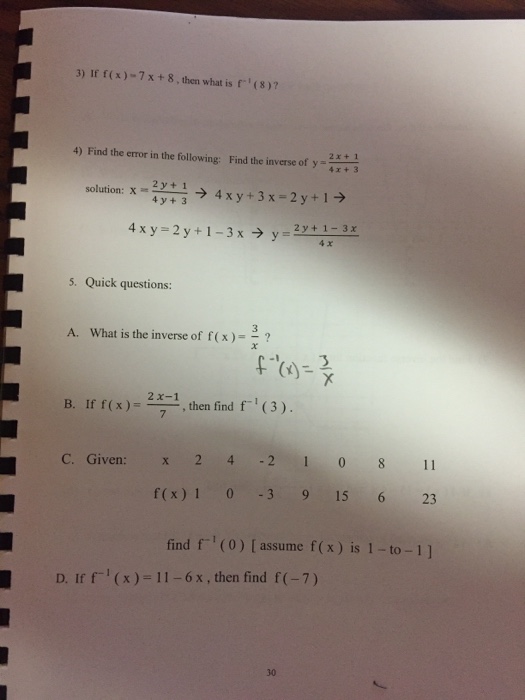



If F X 7x 8 Then What Is F 1 8 Find The Chegg Com
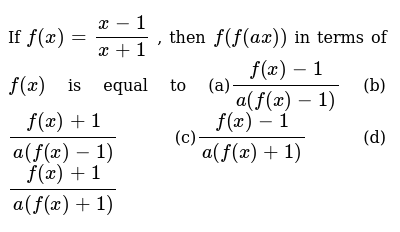



If F X X 1 X 1 Then F F A X In Terms Of F X Is Equal To A F X 1 A F X 1 B F X 1 A F X 1 C F X 1 A F X 1 D F X 1 A F X 1




If F X X 3 1 X 3 Then Find The Value Of F X F X




Misc 4 Show F X X 1 X Is One One Onto Miscellaneous
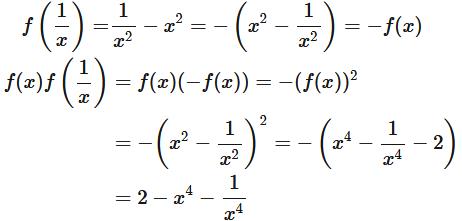



If F X X 2 1 X 2 Then Find The Value Of F X F 1 X Edurev Class 11 Question




If F X 1 X 1 X Then Find F F Sintheta




If F X 2x 1 3x 2 Then Fof 2 Is Equal To




If F X 1 X 1 X Then Find F F Sin Theta Brainly In



Http Link Springer Com Content Pdf m 3a978 94 009 5794 7 2f1 Pdf




Let F X 11 X Then F F F X




Section 2 7 One To One Functions And Their Inverses Pdf Free Download




If F X 2x And G X X 2 2 1 Then Which Of The Following Can Be Discontinuous Function Youtube
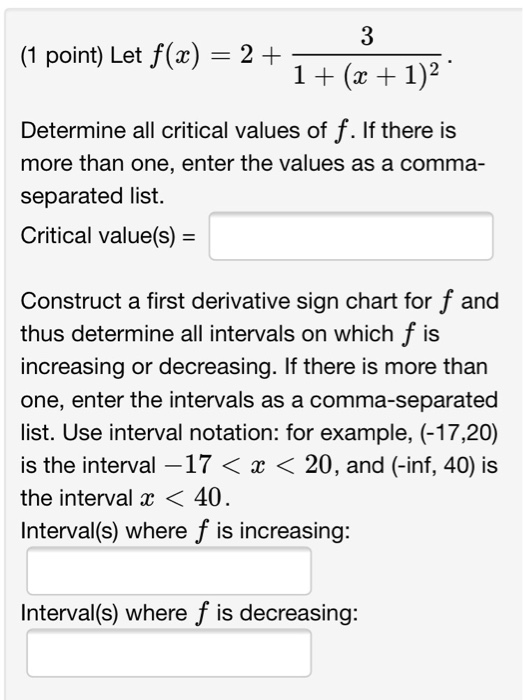



Let F X 2 3 1 X 1 2 Determine All Critical Chegg Com



0 件のコメント:
コメントを投稿